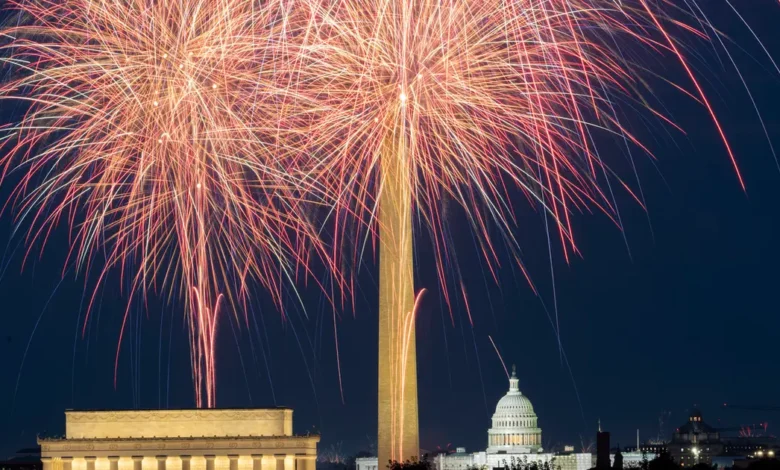How People Are Celebrating, Protesting, and Traveling for July Fourth

Recent polls suggest a decline in national pride among Americans, especially Democrats, during the Trump era, with some questioning July Fourth celebrations. However, Scott Allen, a California Democrat, plans to celebrate with neighbors, honoring his Marine father and American freedoms.
“We can have protests. We can have free speech,” said Allen, 60. This Independence Day feels different for many. Protests against Trump’s policies are planned nationwide, and some Southern California celebrations were canceled due to immigration raids and tariff concerns. Yet, holiday travel is expected to break records.
Several Los Angeles communities canceled festivities due to safety concerns over the Trump administration’s immigration crackdown, which triggered protests and military deployments. El Sereno canceled its parade after ninety percent of participants dropped out. “The majority Latino community is very patriotic,” said organizer Genny Guerrero. “But many people are avoiding events out of fear of immigration agents.” A downtown block party and celebrations in suburbs like Bell Gardens were also canceled.
Meanwhile, Independence Day events protesting Trump’s policies, including Medicaid cuts, are planned by the Women’s March. Events range from potlucks to rallies, including one supporting new citizens in Portsmouth, New Hampshire, and a larger protest outside Houston’s City Hall. “We’re inviting folks to envision what a truly free America looks like,” said Tamika Middleton, managing director of the Women’s March.
Most US fireworks are made in China, said Julie Heckman of the American Pyrotechnics Association. Tariffs on Chinese fireworks reached one hundred forty-five percent in April before Trump paused them at thirty percent. This minimally affects city fireworks shows but impacts retailers selling backyard fireworks, who aren’t passing on the costs to consumers yet. However, Heckman says thirty percent tariffs or higher are unsustainable long-term, especially considering the anticipated demand for America’s two hundred fiftieth anniversary in 2026.
AAA projected over seventy-two million people traveling at least fifty miles from home, including nearly sixty-two million by car–a record high. Gas prices have risen but remain the lowest since 2021. Nearly six million people will fly, a four percent increase from last year. The Federal Aviation Administration anticipates the busiest July Fourth week in fifteen years.










